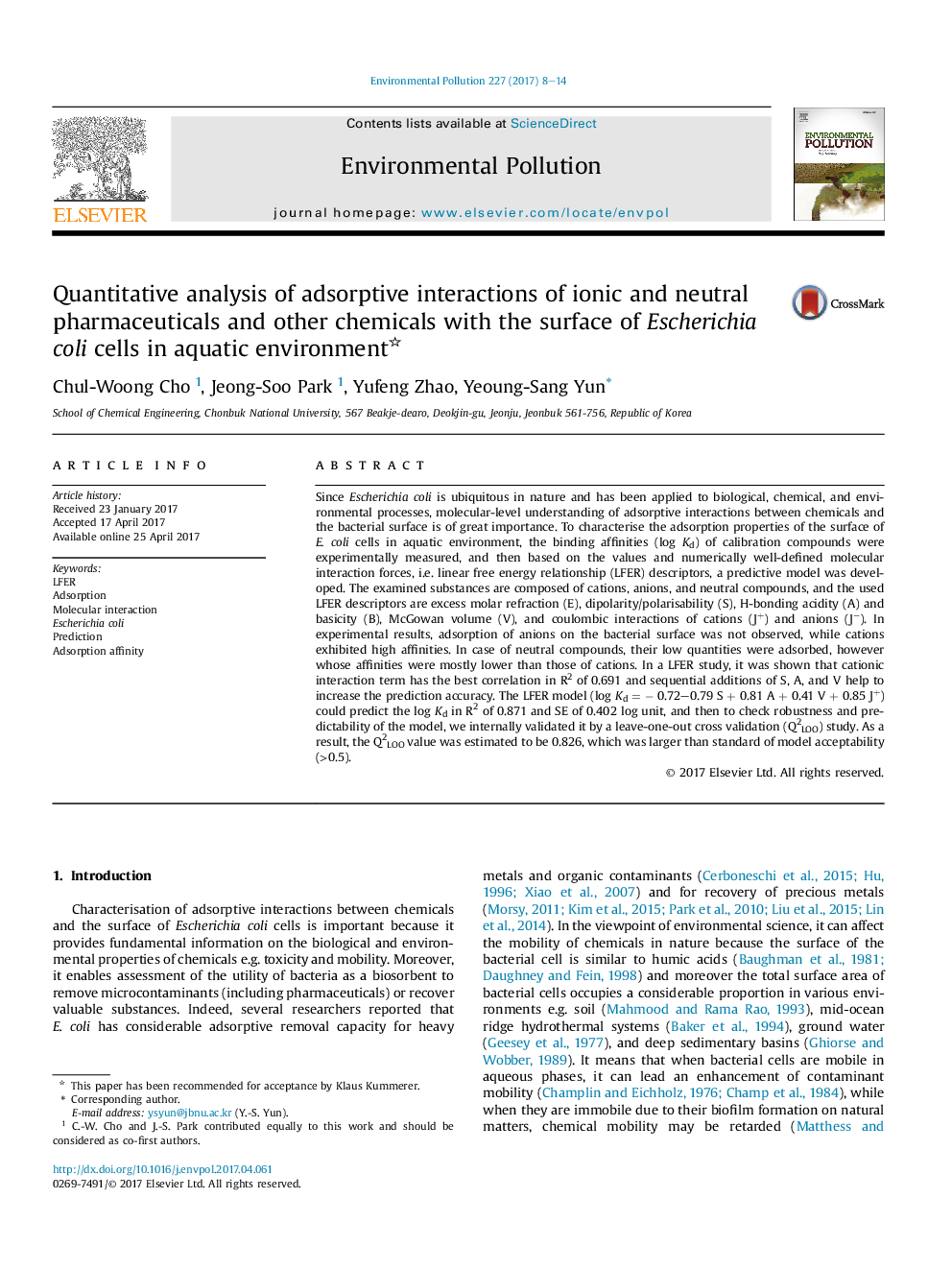| کد مقاله | کد نشریه | سال انتشار | مقاله انگلیسی | نسخه تمام متن |
|---|---|---|---|---|
| 5749119 | 1619146 | 2017 | 7 صفحه PDF | دانلود رایگان |

- Adsorptive interactions between chemicals and the surface of E. coli were characterized.
- Cationic pharmaceuticals were highly adsorbed on bacterial surface via electrostatic interactions.
- Anionic chemicals have undetectable interaction with bacterial surface due to repulsive force.
- Linear Free Energy Relationship model could be used for predicting adsorptive interaction.
Since Escherichia coli is ubiquitous in nature and has been applied to biological, chemical, and environmental processes, molecular-level understanding of adsorptive interactions between chemicals and the bacterial surface is of great importance. To characterise the adsorption properties of the surface of E. coli cells in aquatic environment, the binding affinities (log Kd) of calibration compounds were experimentally measured, and then based on the values and numerically well-defined molecular interaction forces, i.e. linear free energy relationship (LFER) descriptors, a predictive model was developed. The examined substances are composed of cations, anions, and neutral compounds, and the used LFER descriptors are excess molar refraction (E), dipolarity/polarisability (S), H-bonding acidity (A) and basicity (B), McGowan volume (V), and coulombic interactions of cations (J+) and anions (Jâ). In experimental results, adsorption of anions on the bacterial surface was not observed, while cations exhibited high affinities. In case of neutral compounds, their low quantities were adsorbed, however whose affinities were mostly lower than those of cations. In a LFER study, it was shown that cationic interaction term has the best correlation in R2 of 0.691 and sequential additions of S, A, and V help to increase the prediction accuracy. The LFER model (log Kd = â 0.72-0.79 S + 0.81 A + 0.41 V + 0.85 J+) could predict the log Kd in R2 of 0.871 and SE of 0.402 log unit, and then to check robustness and predictability of the model, we internally validated it by a leave-one-out cross validation (Q2LOO) study. As a result, the Q2LOO value was estimated to be 0.826, which was larger than standard of model acceptability (>0.5).
262
Journal: Environmental Pollution - Volume 227, August 2017, Pages 8-14